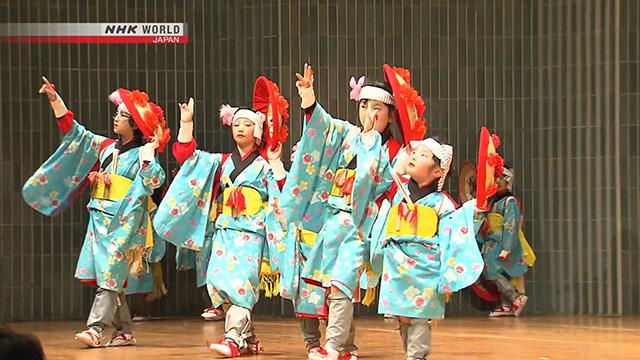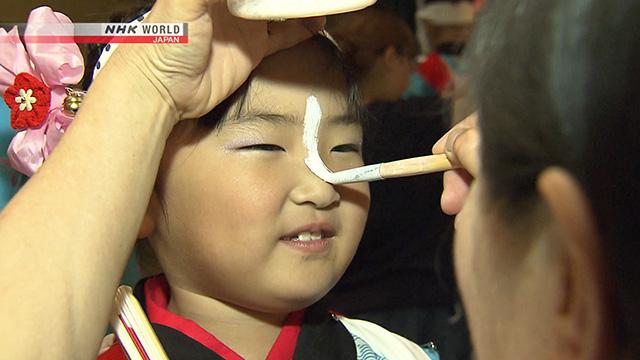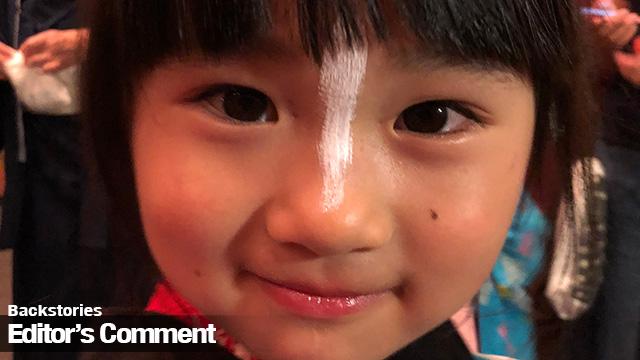They are dressed up in colorful kimonos. Some are as young as four years old, the oldest ones twelve. A few minutes ago, they were playing around, chasing each other, or enjoying sweets. But they have more somber looks now. It’s time to perform.

They are members of a local dance troupe in a district called Kashima-shimomachi in Minamisoma City, Fukushima prefecture. Minamisoma was the city hit hardest in the prefecture by the earthquake and tsunami on March 11, 2011. More than 1100 lives were lost. But Kashima-shimomachi was far enough inland to avoid the brunt of the tsunami's force.
So people thought they were spared, until things became clearer about the trouble at the Fukushima Daiichi nuclear power plant. It quickly developed into the worst nuclear accident in Japan’s history. Their houses were outside the 20km radius areas the central government issued evacuation orders to. But the disaster disrupted the region’s infrastructure, and since food wasn't being brought into the city, the local government initially decided to evacuate all citizens.
The Kashima-shimomachi troupe is made up of amateurs. They perform at an annual spring festival at their local Shinto shrine. The tradition has been passed on for generations.
As the residents were evacuating, the troupe's leader and only singer Satoshi Hamana says he “felt so bad not being able to perform in the festival” which was scheduled a month after the disaster. But everyone was taking shelter elsewhere, leaving the shrine and its god alone. When he came back to the district a few months later, he was determined for the troupe to resume performing the following year.

But there was a big problem. Although authorities said the district was generally safe to live in, some families left permanently out of fear of the possible effects of the fallout, or because of their work situation.
Satoshi and his wife Junko, who taught how to dance to the troupe, had to find new members. Luckily, some other families moved in from areas even more seriously affected. The Hamanas managed to convince the distraught community members it was worthwhile to keep the tradition alive and soon they started practicing. The shrine held a festival in April 2012. The girls had the white streak on their noses. In the eyes of the residents, they weren't just local children. They were higher beings, celebrating a new beginning of the cycle of life. Junko said their performance gave energy and happiness to a community that went through so much. One elderly lady asked them to dance at an empty lot where her house used to stand. The earthquake destroyed it. The children danced there and the lady thanked them, crying.

In early July, the troupe gave a performance in front of a group of music critics and journalists from the US and Canada. For most, It was their first time to visit Fukushima. The organizers invited them in hopes to let the world know that some centuries-old traditions have indeed survived the horrific disaster, playing an important role for the affected communities.
The dance was a joy to watch. It was a reminder that children are not always weaker. Like the boys who made it out of the cave in Thailand, these girls give hope and inspiration to adults in their community to rehabilitate and move forward.

